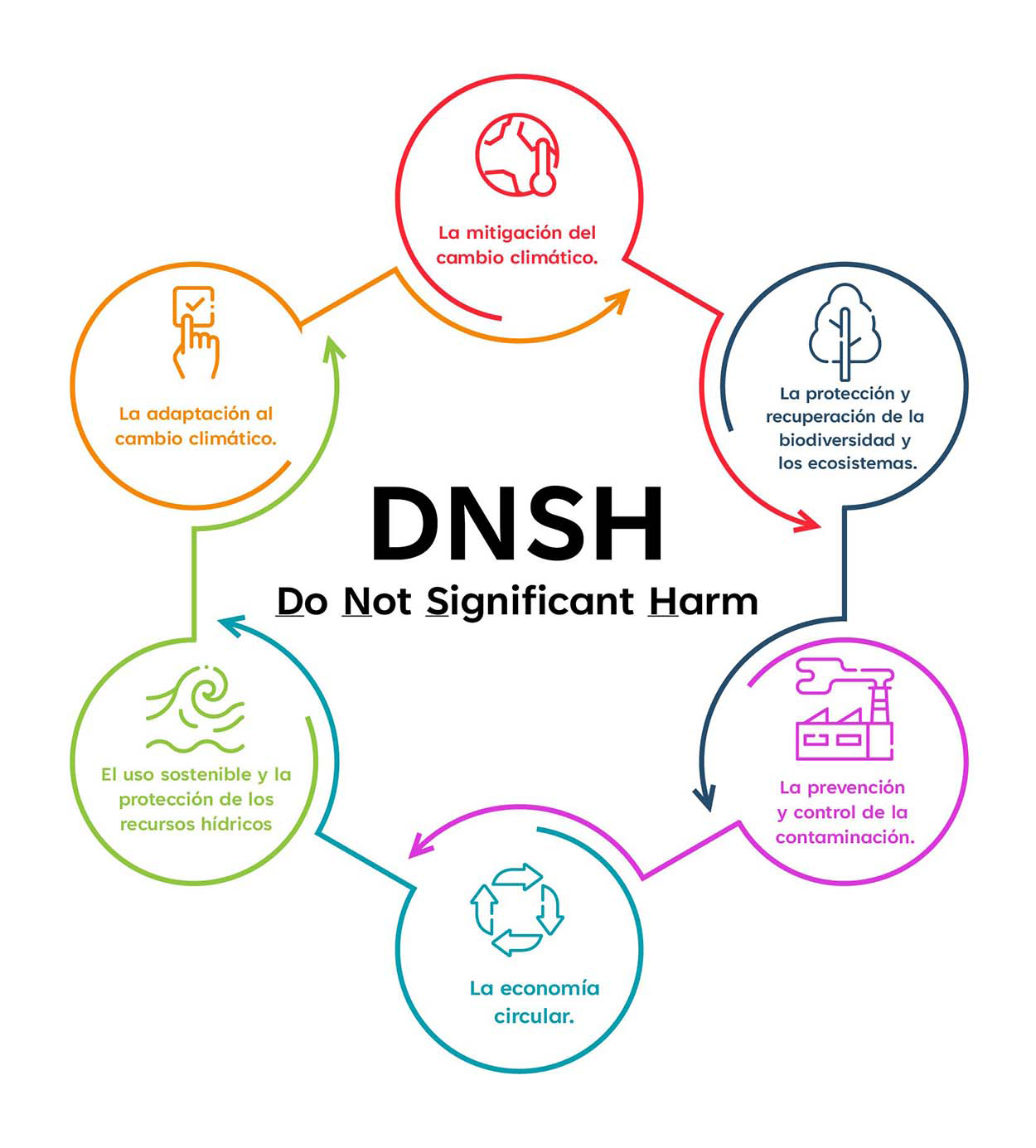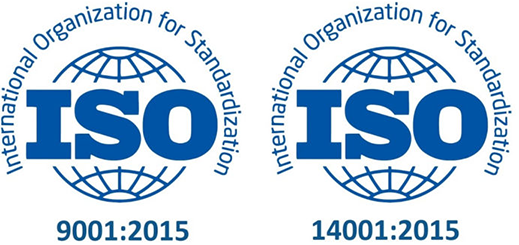Para aquellas empresas y organizaciones que buscan participar en iniciativas como el Plan de Recuperación, Transformación y Resiliencia (PRTR) y acceder a fondos europeos, el cumplimiento del principio DNSH (Do Not Significant Harm) se ha convertido en un requisito esencial.
¿Qué es el principio DNSH y en qué consiste?
El principio DNSH, derivado del Reglamento (UE) 2021/241, establece el Mecanismo de Recuperación y Resiliencia (RMRR) como un criterio obligatorio para todas las actuaciones llevadas a cabo en el marco de los fondos Next Generation EU.
En términos sencillos, implica la obligación de «no causar perjuicio significativo al medio ambiente».
Este principio se basa en seis objetivos medioambientales que sirven como base para evaluar la viabilidad medioambiental de las actuaciones propuestas.
Los 6 objetivos medioambientales del principio DNSH son:
- Mitigación del cambio climático: Referente a la producción de gases de efecto invernadero (GEI).
- Adaptación al cambio climático: Actividades que causen impacto en el clima, personas o entorno.
- Uso sostenible y protección de los recursos hídricos y marinos: Actividades que generen problemas en el buen estado del entorno marino o de los recursos hídricos.
- Economía circular: Imprudencias en materia de reciclaje, producción masiva de residuos y explotación de recursos naturales.
- Prevención y control de la contaminación: Aumento significativo de las emisiones contaminantes en aire, agua o tierra.
- Protección y recuperación de la biodiversidad y los ecosistemas: Actividades perjudiciales para los ecosistemas y hábitats naturales.
Importancia del cumplimiento del criterio DNSH
El MRR, alineado con el Pacto Verde Europeo y los Objetivos de Desarrollo Sostenible de las Naciones Unidas, concede especial importancia al pilar de la transición ecológica.
La Comisión Europea busca garantizar una transición global evaluando los planes nacionales para evitar impactos significativos en el medioambiente.
El cumplimiento del criterio DNSH se convierte, entonces, en un factor determinante para acceder a la financiación, alineándose con las metas de sostenibilidad europeas.
¿Cómo se demuestra el cumplimiento del DNSH en el Plan?
Para demostrar el cumplimiento del principio DNSH, el PRTR (Registro Estatal de Emisiones y Fuentes Contaminantes) proporciona diversas indicaciones:
- Ausencia de impacto: Las actuaciones deben aportar una mejora significativa en el objetivo final.
- Consideración de efectos directos e indirectos: Evaluar los posibles impactos durante todo el ciclo de vida de la actuación y sus efectos posteriores.
- Referencia al Reglamento de Taxonomía: Incorporar las categorías y criterios de sostenibilidad establecidos en la taxonomía.
- Cita de la normativa en vigor: Comprometerse a cumplir con la normativa medioambiental vigente.
- Herramientas de evaluación del impacto: Contar con herramientas adecuadas para evaluar el impacto medioambiental.
- Pruebas de verificación: Proporcionar pruebas según el Anexo II de la Guía Técnica de la Comisión Europea.
- Indicaciones específicas para actividades: Consultar el Anexo IV de la Guía para detalles sobre actividades específicas.
La transversalidad del DNSH
El principio DNSH no es solo un requisito en la fase de planificación; debe reflejarse explícitamente durante todo el ciclo de vida de la actividad.
La presencia de este principio se evidencia a través de instrumentos jurídicos del Plan, tales como bases reguladoras, pliegos administrativos y técnicos, convenios, entre otros.
¿Cómo saber si estoy cumpliendo con el DNSH?
El Anexo II de la Guía DNSH del PRTR ofrece un cuestionario de autoevaluación que permite a las empresas y organizaciones evaluar el nivel de cumplimiento del principio de no causar perjuicio.
Este cuestionario aborda aspectos clave para determinar si las actuaciones propuestas están alineadas con los objetivos medioambientales.
El principio DNSH no solo es un requisito burocrático, sino una herramienta crucial para garantizar que las inversiones promovidas por el PRTR contribuyan positivamente a la sostenibilidad medioambiental.
Cumplir con estos criterios no solo es esencial para acceder a la financiación, sino también para respaldar la visión de una Europa más verde y sostenible en línea con los compromisos internacionales.
Para cumplir con dichos criterios, lo recomendable es tener el apoyo y asesoramiento de una consultoría ESG especializada como Ecoterrae.





